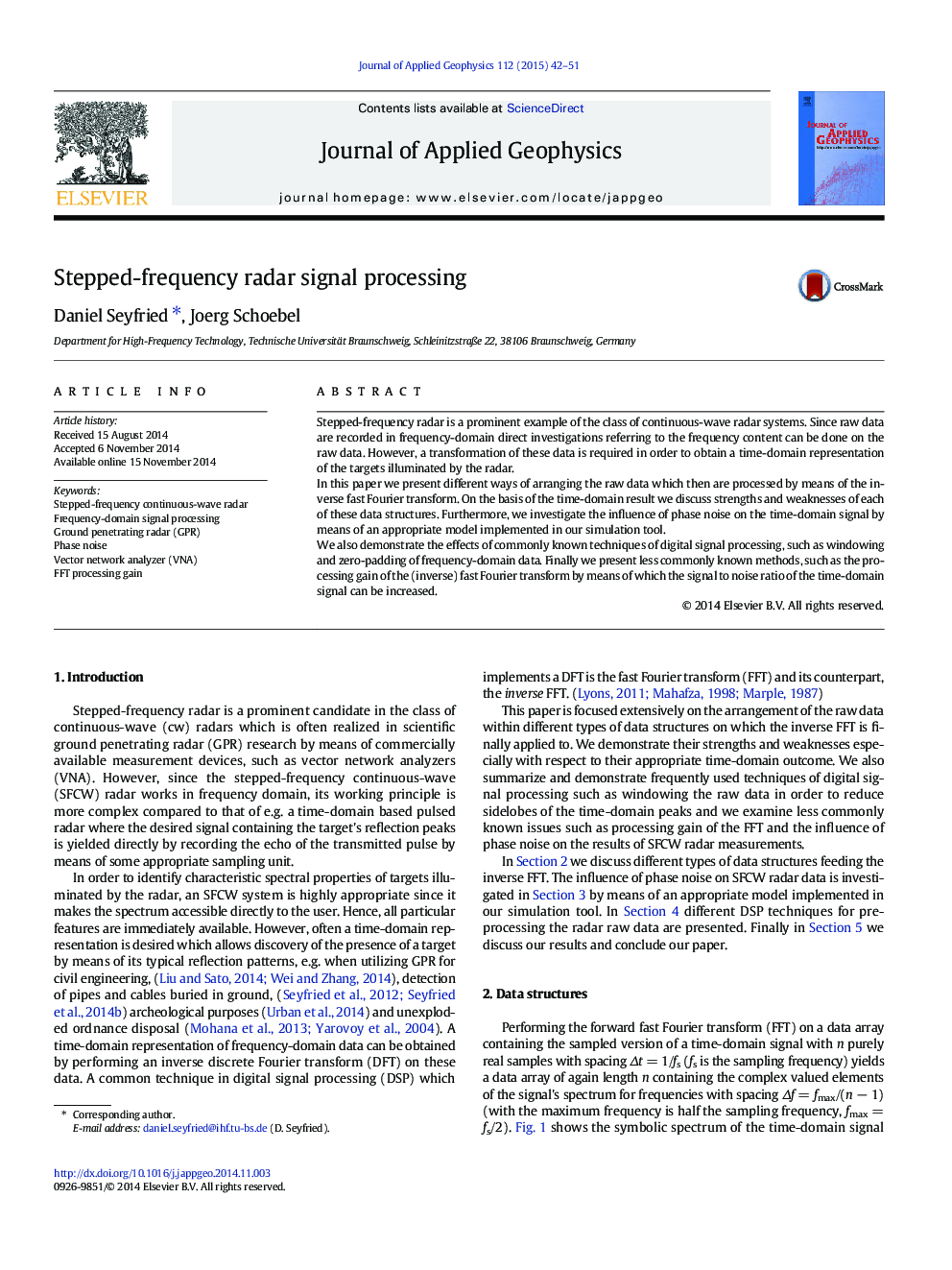| Article ID | Journal | Published Year | Pages | File Type |
|---|---|---|---|---|
| 4739997 | Journal of Applied Geophysics | 2015 | 10 Pages |
•We describe several ways of transforming raw frequency-domain data into time domain.•We describe the effects occurring for the different transformations.•We demonstrate how to improve time-domain signals.•We report about phase noise and its effects to the time-domain signal.•We illustrate how FFT processing gain reduces noise in the time-domain signal.
Stepped-frequency radar is a prominent example of the class of continuous-wave radar systems. Since raw data are recorded in frequency-domain direct investigations referring to the frequency content can be done on the raw data. However, a transformation of these data is required in order to obtain a time-domain representation of the targets illuminated by the radar.In this paper we present different ways of arranging the raw data which then are processed by means of the inverse fast Fourier transform. On the basis of the time-domain result we discuss strengths and weaknesses of each of these data structures. Furthermore, we investigate the influence of phase noise on the time-domain signal by means of an appropriate model implemented in our simulation tool.We also demonstrate the effects of commonly known techniques of digital signal processing, such as windowing and zero-padding of frequency-domain data. Finally we present less commonly known methods, such as the processing gain of the (inverse) fast Fourier transform by means of which the signal to noise ratio of the time-domain signal can be increased.
